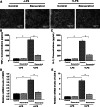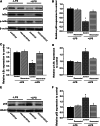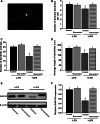Resveratrol Rescues the Impairments of Hippocampal Neurons Stimulated by Microglial Over-Activation In Vitro
- PMID: 25898934
- PMCID: PMC11486292
- DOI: 10.1007/s10571-015-0195-5
Resveratrol Rescues the Impairments of Hippocampal Neurons Stimulated by Microglial Over-Activation In Vitro
Abstract
Resveratrol is a naturally occurring phytoalexin found in red grapes, and believed to have neuroprotective, anti-oxidant, and anti-inflammatory effects. But little is known about its effect on the neural impairments induced by microglial over-activation, which leads to neuroinflammation and multiple pathophysiological damages. In this study, we aimed to investigate the protective effects of resveratrol on the impairments of neural development by microglial over-activation insult. The results indicated that resveratrol inhibited the lipopolysaccharide (LPS)-dependent release of cytokines from activated microglia and LPS-dependent changes in NF-κB signaling pathway. Conditioned medium (CM) from activated microglia treated by resveratrol directly protected primary cultured hippocampal neurons against LPS-CM-induced neuronal death, and restored the inhibitory effects of LPS-CM on dendrite sprouting and outgrowth. Finally, neurons cultured in CM from LPS-stimulated microglia treated by resveratrol exhibited increased spine density compared to those without resveratrol treatment. Our findings support that resveratrol inhibits microglial over-activation and alleviates neuronal injuries induced by microglial activation. Our study suggests the use of resveratrol as an alternative intervention approach that could prevent further neuronal insults.
Keywords: Hippocampal neuron; LPS; Microglia; NF-κB; Resveratrol.
Conflict of interest statement
The authors (Feng Wang, Na Cui, Lijun Yang, Lin Shi, Qian Li, Gengshen Zhang, Jianliang Wu, Jun Zheng, and Baohua Jiao) declare there is no conflict of interest.
Figures







Similar articles
-
Tanshinone IIA Rescued the Impairments of Primary Hippocampal Neurons Induced by BV2 Microglial Over-Activation.Neurochem Res. 2015 Jul;40(7):1497-508. doi: 10.1007/s11064-015-1624-z. Epub 2015 May 27. Neurochem Res. 2015. PMID: 26012368
-
Resveratrol attenuates hypoxia-induced neurotoxicity through inhibiting microglial activation.Int Immunopharmacol. 2015 Sep;28(1):578-87. doi: 10.1016/j.intimp.2015.07.027. Epub 2015 Jul 28. Int Immunopharmacol. 2015. PMID: 26225925
-
Resveratrol inhibits inflammatory responses via the mammalian target of rapamycin signaling pathway in cultured LPS-stimulated microglial cells.PLoS One. 2012;7(2):e32195. doi: 10.1371/journal.pone.0032195. Epub 2012 Feb 21. PLoS One. 2012. PMID: 22363816 Free PMC article.
-
Resveratrol suppresses calcium-mediated microglial activation and rescues hippocampal neurons of adult rats following acute bacterial meningitis.Comp Immunol Microbiol Infect Dis. 2013 Mar;36(2):137-48. doi: 10.1016/j.cimid.2012.11.002. Epub 2012 Dec 27. Comp Immunol Microbiol Infect Dis. 2013. PMID: 23273676
-
Reviewing the Role of Resveratrol as a Natural Modulator of Microglial Activities.Curr Pharm Des. 2015;21(36):5277-91. doi: 10.2174/1381612821666150928155612. Curr Pharm Des. 2015. PMID: 26416082 Review.
Cited by
-
Alzheimer's disease: natural products as inhibitors of neuroinflammation.Inflammopharmacology. 2020 Dec;28(6):1439-1455. doi: 10.1007/s10787-020-00751-1. Epub 2020 Sep 15. Inflammopharmacology. 2020. PMID: 32930914 Free PMC article. Review.
-
Insulin-Like Growth Factor-1 Enhances Motoneuron Survival and Inhibits Neuroinflammation After Spinal Cord Transection in Zebrafish.Cell Mol Neurobiol. 2022 Jul;42(5):1373-1384. doi: 10.1007/s10571-020-01022-x. Epub 2021 Jan 22. Cell Mol Neurobiol. 2022. PMID: 33481118 Free PMC article.
-
Lanthanum Impairs Learning and Memory by Activating Microglia in the Hippocampus of Mice.Biol Trace Elem Res. 2022 Apr;200(4):1640-1649. doi: 10.1007/s12011-021-02637-x. Epub 2022 Feb 18. Biol Trace Elem Res. 2022. PMID: 35178682
-
Phenolic Compounds Characteristic of the Mediterranean Diet in Mitigating Microglia-Mediated Neuroinflammation.Front Cell Neurosci. 2018 Oct 23;12:373. doi: 10.3389/fncel.2018.00373. eCollection 2018. Front Cell Neurosci. 2018. PMID: 30405355 Free PMC article. Review.
-
Anesthetic isoflurane attenuates activated microglial cytokine-induced VSC4.1 motoneuronal apoptosis.Am J Transl Res. 2016 Mar 15;8(3):1437-46. eCollection 2016. Am J Transl Res. 2016. PMID: 27186270 Free PMC article.
References
-
- Aldskogius H, Kozlova EN (1998) Central neuron-glial and glial-glial interactions following axon injury. Prog Neurobiol 55:1–26 - PubMed
-
- Anekonda TS, Reddy PH (2006) Neuronal protection by sirtuins in Alzheimer’s disease. J Neurochem 96:305–313 - PubMed
-
- Ates O, Cayli S, Altinoz E, Gurses I, Yucel N, Sener M, Kocak A, Yologlu S (2007a) Neuroprotection by resveratrol against traumatic brain injury in rats. Mol Cell Biochem 294:137–144 - PubMed
-
- Ates O, Cayli SR, Yucel N, Altinoz E, Kocak A, Durak MA, Turkoz Y, Yologlu S (2007b) Central nervous system protection by resveratrol in streptozotocin-induced diabetic rats. J Clin Neurosci 14:256–260 - PubMed
Publication types
MeSH terms
Substances
LinkOut - more resources
Full Text Sources

